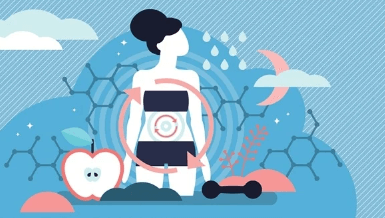The concept map of Concept Map: Metabolism of Nutrients serves as a pivotal tool for understanding the complex biochemical pathways through which carbohydrates, proteins, and fats are efficiently converted into energy and structural components essential for bodily functions. By examining the metabolic pathways such as glycolysis, protein synthesis, and fatty acid oxidation, one can appreciate the intricate balance maintained by enzymatic reactions and hormonal influences. This framework not only elucidates the interconnectedness of these processes but also raises critical questions regarding their implications for health and disease management. What might these insights reveal about optimizing metabolic efficiency?
Overview of Concept Map: Metabolism of Nutrients
Concept Map: Metabolism of Nutrients is a complex biochemical process that converts food substances into energy and the building blocks necessary for cellular function and growth.
This involves energy production through nutrient utilization across various metabolic pathways, facilitated by enzymatic reactions.
Efficient nutrient absorption and metabolic regulation are critical for maintaining energy balance and nutrient storage, ensuring that the body meets its physiological demands effectively.
Read More Cute:_Eh0n-Omhzu= Bunny Gif
Carbohydrate Metabolism Pathways
Carbohydrate metabolism pathways encompass several intricate biochemical processes that transform carbohydrates into glucose and other metabolites, which are vital for energy production and cellular function.
Glycolysis regulation, carbohydrate storage, and carbohydrate oxidation are fundamental, influencing energy yield and metabolic intermediates.
The insulin response plays a crucial role in glucose homeostasis, while dietary fiber impacts these pathways, further enhancing metabolic efficiency.

Protein Metabolism Processes
Protein metabolism processes are integral to maintaining cellular function and overall physiological health.
These processes encompass protein synthesis, where ribosomes facilitate the assembly of amino acids into polypeptides, and amino acid catabolism, which involves the degradation of excess amino acids for energy or conversion into metabolic intermediates.
Together, these mechanisms ensure homeostasis and optimize the utilization of proteins in biological systems.
Fat Metabolism Mechanisms
Fat metabolism mechanisms are essential for energy production and storage within the body.
Lipid absorption initiates the process, allowing fatty acids to enter circulation.
Subsequently, fatty acid oxidation occurs, breaking down triglycerides into acetyl-CoA for ATP synthesis.
This intricate interplay ensures efficient energy utilization, enabling the body to maintain metabolic flexibility and support various physiological functions vital for sustaining life and promoting freedom of movement.
Read More Cute:_Gtqvbj2ywa= Shopkins
Conclusion
In conclusion, the intricate interplay of carbohydrate, protein, and fat Concept Map: Metabolism of Nutrients underscores the complexity of nutrient utilization within the human body. Each metabolic pathway operates as a finely tuned instrument, harmonizing enzymatic reactions and hormonal influences to sustain energy balance and physiological demands. The seamless integration of these processes exemplifies the elegance of biochemical regulation, revealing that nutrient metabolism is not merely a series of reactions, but rather a symphony orchestrating life itself.
